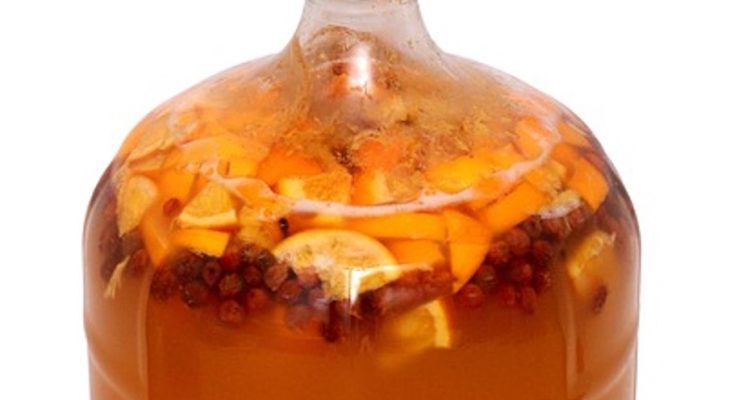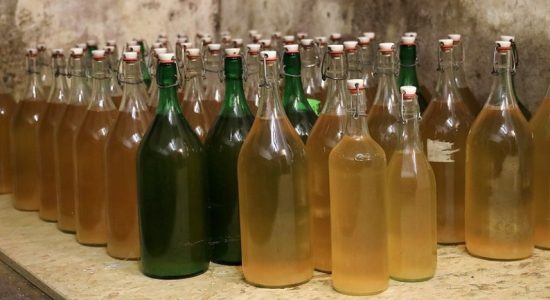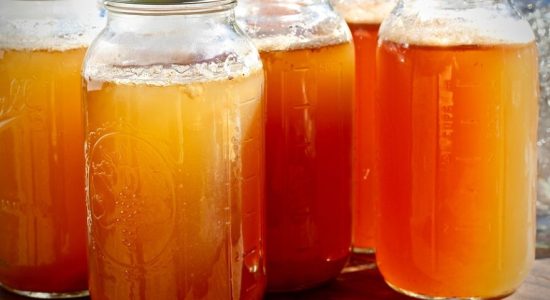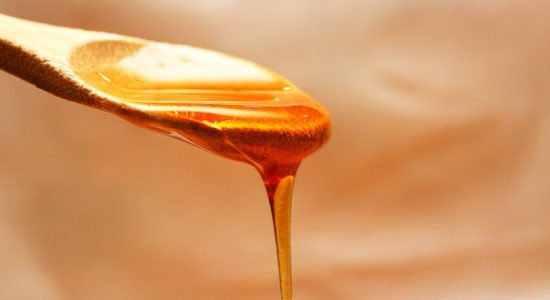How To Tell if Mead Is Infected or Contaminated

Mead has been around longer than anyone alive today. The sweet honey wine predates ceramic and agriculture. Homebrewers with a sense of history and a sweet tooth are keen to cut their teeth on mead. However, contaminations often infect early brew batches.
Appearance, taste, and smell indicate a mead is infected or contaminated. These elements alone may mean something else but combined with each other, they suggest infection. Smell taste, and observe your mead to ensure it’s uncontaminated.
This article details the signs of infection and explains what a brewer should look, taste, and smell for in their mead. Keep an open mind; infections seldom negatively impact your health and can create a welcome sour flavor.
1. Observe It
Meads kept in fermentation too long grow mold. The growth never permeates the alcohol, remaining only on the surface. Skimming the mold off the top completely removes the infection, and the beer remains drinkable.
Mead mold is furry and discolored. It will grow either green, brown, or white.
Some beer infections cause easily observed white growths called pellicles. These fibrous particles float to a brew’s surface.
Pellicles form to combat oxygen’s presence. Wild yeast strains and bacterias develop the particles to facilitate an anaerobic environment where they thrive.
Left unchecked, pellicles cover a beer’s entire surface. The particles’ appearances vary; they can form large surface bubbles or a thin, solid white film over the top of the mead.
Pellicle growth indicates the presence of Brettanomyces or Acetobacter.
Brettanomyces
Brettanomyces is a strain of wild yeast often used to create unusual beer flavors. Sour beers actually depend on these growths, so don’t throw the baby out with the contaminated mead.
Brettanomyces also called “British fungus,” forms on fruit peels. The yeast provides unique flavors, including:
- Tropical fruit
- Acidic fruit
- Horse blankets
- Band-aids
- Barnyards
- Leather
While most of these do not sound like flavors you’d want in your mouth, in small doses and used correctly, they can provide enjoyable undertones to your brew.
However, large amounts ruin a beer, imparting flavors no one has ever wanted to drink.
Brettanomyces are sturdy and designed to withstand your best efforts to eradicate them. Sanitization is the key to avoiding yeast. However, dry steam vapor sanitization kills the strain if it’s invaded your equipment.
Acetobacter
Intentionally included, acetobacter adds a welcome sour taste to beers. However, the bacteria create a potent and unpleasant vinegar flavor.
Warmth and oxygen contribute to acetobacter formation. A thin white pellicle with few pustules suggests the bacteria’s development.
Lower your mead’s temperature to counteract the presence of acetober.
2. Taste It
Sometimes the most obvious answer is also the correct one. Sample the brew if you want to know if your mead is contaminated.
An unpleasant flavor repeatedly occurring often indicates either infected mead or contaminated equipment. One vile-tasting batch is bad luck; multiple disgusting brews suggest infection.
Infection and contamination manifest as the following flavors:
- Sour
- Buttery
- Soy Sauce
- Solvent
- Vinegar
- Barnyards
- Goats
- Horse-blankets
Bacterias and wild yeast strains won’t harm you, so don’t hesitate to try your beer. You may even find the infection’s taste pleasant and welcome. If you find the sourness enjoyable, lean into it and allow the fermentation to complete.
If the beer tastes vile, throw out the batch. The flavor won’t improve with time.
3. Smell It
If you are still uncertain about whether or not your homebrew is infected, sniff the brew. Contamination often manifests as an out-of-place aroma.
The mead‘s smell can help you ascertain the cause of infection:
- A vinegar smell: means a bacterial or wild yeast infection
- A butter smell: can mean either contaminated yeast or oxygenation
- A vomit smell: can indicate the bacteria produced in spoiled beer
- A skunk smell: can indicate UV light exposure caused the cellular breakdown
- A musty smell: moldy yeast can cause this smell
Watch out for a sulfur aroma. Know your yeast; some strains radiate a powerful scent, and a resulting stink is natural and correct.
Additionally, sulfurous water creates a rotten aroma. Your beer may still be fine, just stinky. However, the scent indicates infection if your yeast and water do not normally carry a potent odor.
Pair the smell test with a taste. If the brew smells and tastes putrid, it’s infected or contaminated and must be discarded.
4. Over-Attenuation
Attenuation is the measure of how much sugar the yeast has turned into alcohol. No beer achieves 100 percent attenuation; some sugar always remains.
When your beer consistently attenuates higher than the yeast involved should, it means that another uninvited strain is continuing fermentation in your mead.
Consistent over-attenuation suggests an invasive presence. The end result is a dried-out beer with an unpleasant flavor.
Appropriate attenuation levels vary depending on the yeast strain used. Standard levels are between 75 and 80 percent. Any readings regularly above that indicate a problem; however, it’s not always an infection.
Pair the over-attenuation ratings with one of the other indicators mentioned on this list to determine if your mead is infected.
Causes of Infection and Contamination in Mead
The good news is infections and contaminations are easily avoided. Inadequate sanitation causes the vast majority of infections.
Sanitize your equipment thoroughly and often. Most of these infections have no deleterious impact on your health.
However, many meads include raw honey. This ingredient can lead to botulism. Unfortunately, you won’t know if the raw honey induced botulism until you’re vomiting. Avoid using the syrup in your mead to steer clear of food poisoning.
Conclusion
Unsanitized equipment causes infections and contaminations in meads. You can monitor your brew for unwanted bacteria and unwelcome yeast strains through observation, taste, and smell.
Most bacteria and yeast won’t harm you if ingested. They will, however, impact the taste of your mead.
Infections aren’t inherently a bad thing. Certain contaminants add a welcome sour taste or a pleasant surprise flavor. A minor infection may be a happy accident with delightful results.
However, carefully sanitizing your equipment is essential and ensures your mead tastes the way you planned.







